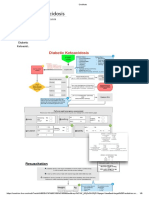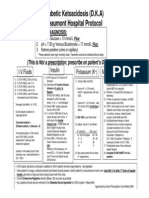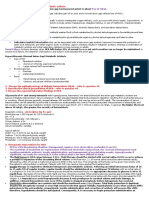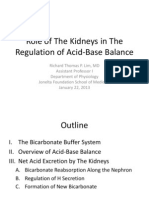0% found this document useful (0 votes)
416 views3 pagesDKA Pathophysiology and Management
DKA results from a lack of insulin causing glucose to build up in the blood and fatty acids to be broken down, leading to acidosis. Blood glucose over 250 mg/dL indicates DKA. Electrolyte disturbances occur due to dehydration and loss of electrolytes in urine. Acidosis develops as bicarbonate levels fall below normal. Medical management involves slow rehydration and insulin therapy to correct glucose and electrolyte levels while preventing complications like hypoglycemia.
Uploaded by
Tee WoodCopyright
© © All Rights Reserved
We take content rights seriously. If you suspect this is your content, claim it here.
Available Formats
Download as DOCX, PDF, TXT or read online on Scribd
0% found this document useful (0 votes)
416 views3 pagesDKA Pathophysiology and Management
DKA results from a lack of insulin causing glucose to build up in the blood and fatty acids to be broken down, leading to acidosis. Blood glucose over 250 mg/dL indicates DKA. Electrolyte disturbances occur due to dehydration and loss of electrolytes in urine. Acidosis develops as bicarbonate levels fall below normal. Medical management involves slow rehydration and insulin therapy to correct glucose and electrolyte levels while preventing complications like hypoglycemia.
Uploaded by
Tee WoodCopyright
© © All Rights Reserved
We take content rights seriously. If you suspect this is your content, claim it here.
Available Formats
Download as DOCX, PDF, TXT or read online on Scribd
/ 3











































































































